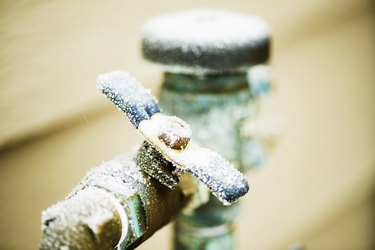How to Avoid Frozen Pipes in Cold Weather: Professional Tips
How to Avoid Frozen Pipes in Cold Weather: Professional Tips
Blog Article
Just about everyone is bound to have their unique thinking in relation to 6 Ways to Prevent Frozen Pipes.

Cold weather can ruin your pipes, specifically by freezing pipes. Below's exactly how to avoid it from occurring and what to do if it does.
Introduction
As temperatures drop, the risk of frozen pipes rises, potentially causing pricey repair work and water damage. Comprehending exactly how to stop icy pipelines is vital for home owners in cool environments.
Understanding Icy Pipes
What causes pipelines to freeze?
Pipelines ice up when subjected to temperature levels below 32 ° F (0 ° C) for expanded periods. As water inside the pipes ices up, it broadens, taxing the pipe wall surfaces and possibly creating them to rupture.
Threats and problems
Icy pipes can result in water supply disturbances, residential property damage, and pricey repair work. Ruptured pipelines can flood homes and cause considerable architectural damages.
Indicators of Frozen Piping
Identifying frozen pipelines early can avoid them from rupturing.
Exactly how to determine icy pipelines
Try to find reduced water flow from faucets, unusual odors or sounds from pipelines, and noticeable frost on subjected pipes.
Prevention Tips
Insulating at risk pipelines
Wrap pipes in insulation sleeves or use warmth tape to secure them from freezing temperatures. Focus on pipelines in unheated or outside areas of the home.
Home heating methods
Keep interior rooms appropriately heated up, especially locations with plumbing. Open up cupboard doors to permit warm air to flow around pipes under sinks.
Protecting Outside Pipes
Garden tubes and outside taps
Disconnect and drain pipes garden hose pipes prior to winter season. Set up frost-proof faucets or cover outdoor taps with shielded caps.
What to Do If Your Pipes Freeze
Immediate activities to take
If you believe frozen pipes, keep taps open up to alleviate pressure as the ice thaws. Use a hairdryer or towels soaked in warm water to thaw pipelines slowly.
Long-Term Solutions
Architectural modifications
Consider rerouting pipelines away from exterior walls or unheated areas. Add additional insulation to attics, basements, and crawl spaces.
Updating insulation
Purchase top quality insulation for pipes, attic rooms, and wall surfaces. Appropriate insulation assists keep consistent temperature levels and decreases the danger of frozen pipes.
Conclusion
Preventing icy pipes needs aggressive procedures and quick reactions. By understanding the reasons, signs, and preventive measures, property owners can shield their plumbing during winter.
6 Proven Ways to Prevent Frozen Pipes and Protect Your Home
Disconnect and Drain Garden Hoses
Before winter arrives, start by disconnecting your garden hoses and draining any remaining water. Close the shut-off valves that supply outdoor hose bibs and leave the outdoor faucet open to allow any residual water to drain. For extra protection, consider using faucet covers throughout the colder months. It’s also important to drain water from any sprinkler supply lines following the manufacturer’s directions.
Insulate Exposed Pipes
Insulating your pipes is an effective way to prevent freezing. Pipe insulation is readily available at home improvement stores and is relatively inexpensive. Pay close attention to pipes in unheated areas such as the attic, basement, crawl spaces, or garage. Apply foam insulation generously to create a buffer against the cold. You can also wrap your pipes in heat tape or thermostat-controlled heat cables for added warmth.
Seal Air Leaks
Inspect your home for any cracks or openings that could let in cold air. Seal any holes around the piping in interior or exterior walls, as well as the sill plates where your home rests on its foundation. Additionally, make sure to keep your garage door closed unless you’re entering or exiting. Leaving it open creates a significant air leak that can lead to frozen pipes.
Allow Warm Air Circulation
During cold snaps, it’s essential to allow warm air to circulate evenly throughout your home. Leave interior doors ajar to promote better airflow. Open kitchen and bathroom cabinets to help distribute heat consistently around the rooms. If you have small children or pets, be sure to remove any household chemicals or potentially harmful cleaners from open cabinets for safety.
Let Faucets Drip
A small trickle of water can make a big difference in preventing ice formation inside your pipes. When temperatures drop significantly, start a drip of water from all faucets served by exposed pipes. This continuous flow helps prevent the water from freezing. Additionally, running a few faucets slightly can relieve pressure inside the pipes, reducing the chances of a rupture if the water inside does freeze.
https://choateshvac.com/6-proven-ways-to-prevent-frozen-pipes-and-protect-your-home/

As a devoted reader about Winter Plumbing Precautions: Preventing Frozen Pipes, I figured sharing that excerpt was mandatory. Sharing is good. You won't know, you might be doing someone a favor. Thank you for being here. Please check up our website back soon.
Get Estimate Report this page